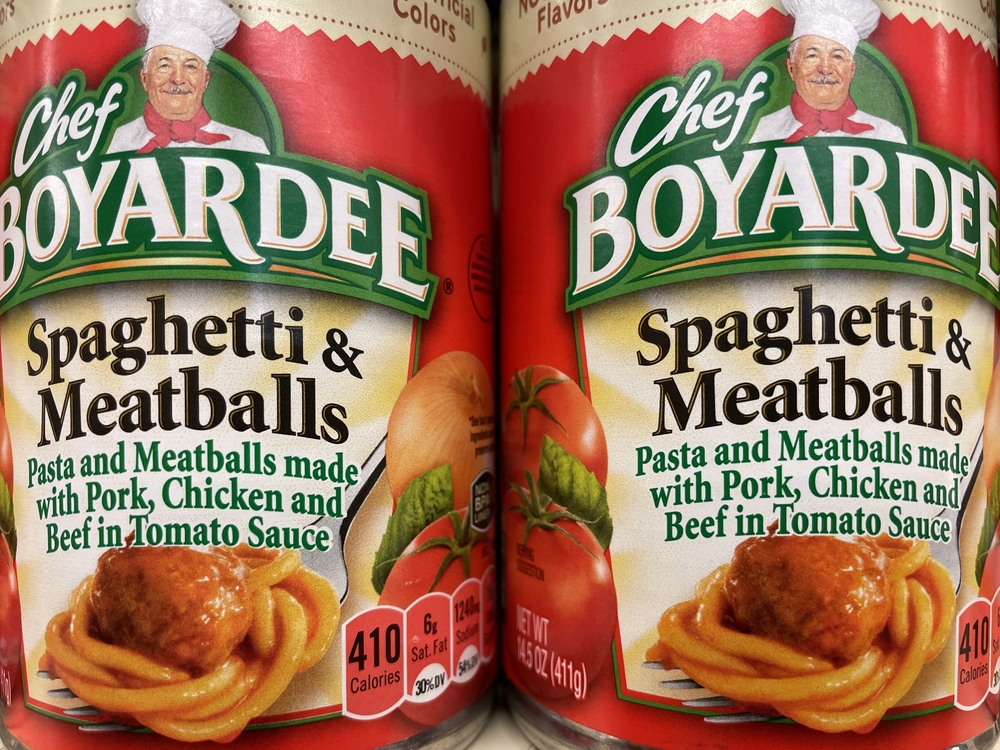
Image source: shutterstock.com
Many shoppers assume canned foods offer consistency, reliability, and comfort, but recent changes in manufacturing have quietly reshaped what is actually inside the cans. As companies face rising costs, supply shortages, and shifting regulations, some of the most familiar products are losing the ingredients consumers expect. These modifications usually appear in tiny print on the label, making them easy to miss during a busy shopping trip. Understanding which pantry staples have changed helps families make smarter choices and avoid paying for products that no longer deliver the quality they once did.
1. Soups Among the Canned Foods Losing Core Vegetables
Canned soups are among the most noticeably affected products because many brands have scaled back on vegetables like carrots, celery, and potatoes. Companies often replace these ingredients with more broth to reduce production costs. This gives the soup a thinner texture and fewer hearty pieces. Shoppers may not notice the change until they pour the soup into a pot at home. Comparing labels before buying can help avoid disappointing meals.
2. Canned Chili Brands Cutting Meat Content
Canned chili is another category of shelf-stable meals losing major ingredients as some brands reduce beef or turkey content. Companies replace meat with beans, sauce, or textured fillers to stretch each batch. While the product still looks similar on the shelf, the flavor and texture are noticeably different. The reduction in meat means shoppers get less protein for the same price. Checking protein grams on the nutrition label helps reveal the true value.
3. Canned Fruit Packed With More Liquid Than Fruit
Canned peach slices, pineapple chunks, and fruit cocktail are among the canned goods that now include more syrup or juice instead of actual fruit pieces. This shift reduces production costs but leaves shoppers with fewer servings per can. The change also increases sugar content, which concerns many families. People often assume the fruit quantities remain unchanged, but labels show meaningful differences. Choosing fruit canned in water or juice can help minimize these issues.
4. Tuna and Seafood Products Shrinking in Quality
Canned tuna is one of the pantry staples where cuts are most obvious because many brands now use more flakes and scraps rather than solid chunks. This impacts texture, consistency, and overall quality. Companies sometimes blend different fish to keep prices stable, which creates an unpredictable eating experience. Shoppers expecting traditional tuna may feel disappointed by the watery or mushy results. Reading package descriptions carefully helps identify higher quality options.
5. Tomato-Based Products Losing Tomato Content
Canned tomatoes, sauces, and pastes have become thinner as tomato content decreases and water content increases. These canned foods once offered rich, dense texture ideal for cooking. Now, shoppers may need more product to achieve the same flavor intensity in recipes. Some brands also reduce seasoning blends that contributed to their signature taste. Checking the ingredient list reveals how much tomato filler has replaced real tomatoes.
6. Canned Beans Skimping on Seasoning and Salt
Canned beans are among the shelf-stable staples facing recipe changes as many companies reduce salt and spices due to cost and regulation pressures. While lower sodium can be beneficial for health, some brands go so far that the beans lose flavor. This leaves shoppers needing to season dishes more heavily at home. Some cans also include more liquid than before, reducing the usable portion. Choosing seasoned or baked varieties can help maintain flavor.
7. Canned Pasta Meals Cutting Cheese and Protein
Canned pasta meals like ravioli and macaroni are packaged meals losing cheese, meat fillings, and richer sauces. Companies often thin the sauce with extra water or oil to reduce manufacturing costs. This results in a less satisfying meal that may leave kids hungry sooner. Parents might notice fewer pasta pieces or smaller filling portions in each can. Comparing serving sizes can help identify brands maintaining quality.
8. Canned Broths Offering Less Depth of Flavor
Chicken and vegetable broths are canned foods now containing fewer herbs, spices, and natural extracts. These changes leave broths tasting weaker and less rich when used in soups or casseroles. Some brands also rely more heavily on added flavors instead of natural ingredients. This can alter the overall taste of homemade recipes. Choosing low-sodium broth and seasoning it yourself often yields better results.
9. Canned Vegetables With Smaller Portions
Many canned vegetables have experienced quiet reductions in portion sizes, even though the can appears the same. These products may now include fewer kernels, peas, or green beans, replaced by more packing liquid. This decreases the number of usable servings for family meals. Shoppers who rely on these staples may notice dishes require more cans than before. Draining the product before use makes these changes easier to spot.
10. Evaporated and Condensed Milk Losing Thickness
Some canned milk varieties are losing thickness as manufacturers adjust formulas to cut costs. These cupboard staples once offered rich, dense consistency ideal for baking and cooking. Thinner versions can change recipe outcomes, especially in desserts. Shoppers may find they need extra product to achieve traditional textures. Checking fat percentages on the label can help identify higher quality options.
Why Paying Attention to Changing Canned Products Helps Your Budget
As canned foods quietly evolve, staying informed helps families avoid lower quality products that no longer deliver good value. A quick label check can reveal changes in ingredients, serving sizes, and nutritional content. Being aware of these shifts allows shoppers to compare brands more effectively and choose products that still meet their expectations. Smart shopping protects both your meals and your budget.
Have you noticed any canned items that seem different lately, and which changes surprised you most?
